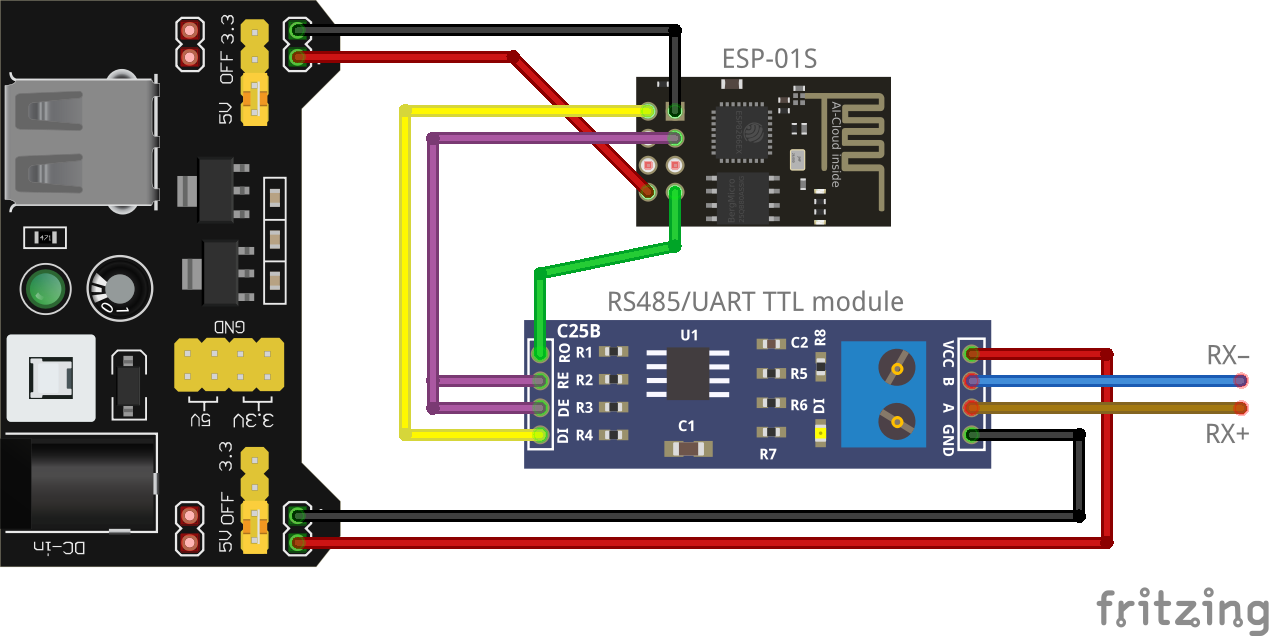- ESP8266 module (ESP-01, ESP-01S, NodeMCU etc.)
- RS485/UART TTL module
- 5V power supply
- jumper wires
- Connect VCC and GND pins of ESP8266 module to power supply.
- Connect VCC and GND pins of RS485/UART TTL module to power supply.
- Connect ESP8266's RX pin to RS485/UART TTL module's RO pin.
- Connect ESP8266's TX pin to RS485/UART TTL module's DI pin.
- Connect ESP8266's IO2 pin to RS485/UART TTL module's DE and RE pins.
- Connect RS485 A (RX+) and B (RX-) to RS485/UART TTL module A and B pins.
- Arduino IDE
- ESP8266 Arduino core (esp8266 by ESP8266 Community installed in board manager)
You may either connect all ESP8266 modules to an existing 2.4 GHz Wi-Fi network or choose one module to serve as an access point (AP) to create a new Wi-Fi network.
The access point should be programmed with the following configuration:
#define STASSID "your-ssid"
#define STAPSK "your-password"
#define AP // enable access point modeThe remaining ESP8266 modules should use the configuration:
#define STASSID "your-ssid"
#define STAPSK "your-password"
// #define AP // this line should be commented or removedBy default, UDP multicast packets use IP address 224.1.2.3 and port 8888. You may customize the IP address and port by modifying the following lines:
IPAddress ipAddressMulticast(224, 1, 2, 3);
uint16_t port = 8888;By default, baudrate 9600 is used. You may change the baudrate by modifying the following line:
Serial.begin(9600);After reading all available bytes from serial buffer, the device waits for a short period of time for next bytes in order to prevent messages from being divided into multiple UDP packets. The delay of 4 milliseconds was determined experimentally. This value may differ for other baudrates.
char *ptr = packetBuffer;
while (Serial.available()) {
while (Serial.available()) {
*ptr++ = Serial.read();
}
delay(4); // for 9600 baudrate
}- Connect IO0 pin to GND on power-up in order to set ESP8266 to programming mode.
- Enable pin should be connected to IO2, because it is turned low during startup (while IO0 is high).
- In order to use pin D2 on NodeMCU, you must define
PIN_ENasD2instead of2(see here) - ESP8266 modules support only 2.4 GHz Wi-Fi.
- UDP is unreliable – some packets might get lost along the way (see here).
- Some routers/switches pass UDP multicast packets only to subscription group members (see IGMP).
